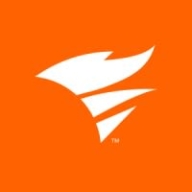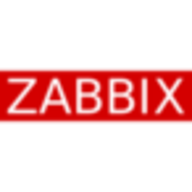

Find out in this report how the two Network Traffic Analysis (NTA) solutions compare in terms of features, pricing, service and support, easy of deployment, and ROI.
There is a return on investment when purchasing SolarWinds NetFlow Traffic Analyzer, as in the long run, there is a return on investments.
I am very satisfied with their technical support, rating it nine out of ten.
They often say that only premium subscribers receive support within one or two hours.
I would rate support eight out of ten.
It is so straightforward that I have never had to use the support.
SolarWinds NetFlow Traffic Analyzer is a scalable solution, and by adding licenses, I can use the same deployment and instance to onboard more elements and nodes.
The license is based on the count of the ports.
Zabbix is very scalable and lightweight.
Zabbix has high scalability.
I would rate its scalability ten out of ten.
The solution is quite stable.
Zabbix is very scalable and lightweight.
Zabbix is quite stable, and we haven't had any problems with Zabbix itself.
It should be like a Meraki cloud, where if you are familiar with Meraki devices, you can locate any device directly on the world map.
Ideally, NetFlow should have a robust alerting mechanism.
The licensing model of SolarWinds NetFlow Traffic Analyzer is always an issue for users because competitors offer unlimited and perpetual licenses, and SolarWinds NetFlow Traffic Analyzer's model is quite costly compared to other brands.
The only issue I can note is that it's Linux-based, and Linux documentation is not the best.
SolarWinds NetFlow Traffic Analyzer's model is quite costly compared to other brands.
provide a rating of nine out of ten
It is literally free.
It provides proactive monitoring, rather than waiting for applications to go down due to heavy bandwidth or latency.
The integration of SolarWinds NetFlow Traffic Analyzer with other SolarWinds tools such as Network Performance Monitor is very important for our network visibility.
The best feature is customizable reporting, which includes network diagrams and monitoring of various types of bandwidth usage and peak times.
If disk usage surpasses a threshold, say 70%, I receive alerts and can take proactive action.
People want to save costs, which is why they install Zabbix, but the reporting functionality is not properly developed.
Zabbix has a lot of features, including monitoring, status updates, and collecting information telemetry from storages and servers as well.
| Product | Market Share (%) |
|---|---|
| SolarWinds NetFlow Traffic Analyzer | 5.0% |
| Darktrace | 23.3% |
| Cisco Secure Network Analytics | 13.5% |
| Other | 58.2% |
| Product | Market Share (%) |
|---|---|
| Zabbix | 10.1% |
| SolarWinds NPM | 4.2% |
| PRTG Network Monitor | 3.9% |
| Other | 81.8% |


| Company Size | Count |
|---|---|
| Small Business | 13 |
| Midsize Enterprise | 4 |
| Large Enterprise | 26 |
| Company Size | Count |
|---|---|
| Small Business | 53 |
| Midsize Enterprise | 23 |
| Large Enterprise | 34 |
Zabbix is an open-source monitoring software that provides real-time monitoring and alerting for servers, networks, applications, and services.
It offers a wide range of features including data collection, visualization, and reporting.
With its user-friendly interface and customizable dashboards, Zabbix helps organizations ensure the availability and performance of their IT infrastructure.
We monitor all Network Traffic Analysis (NTA) reviews to prevent fraudulent reviews and keep review quality high. We do not post reviews by company employees or direct competitors. We validate each review for authenticity via cross-reference with LinkedIn, and personal follow-up with the reviewer when necessary.